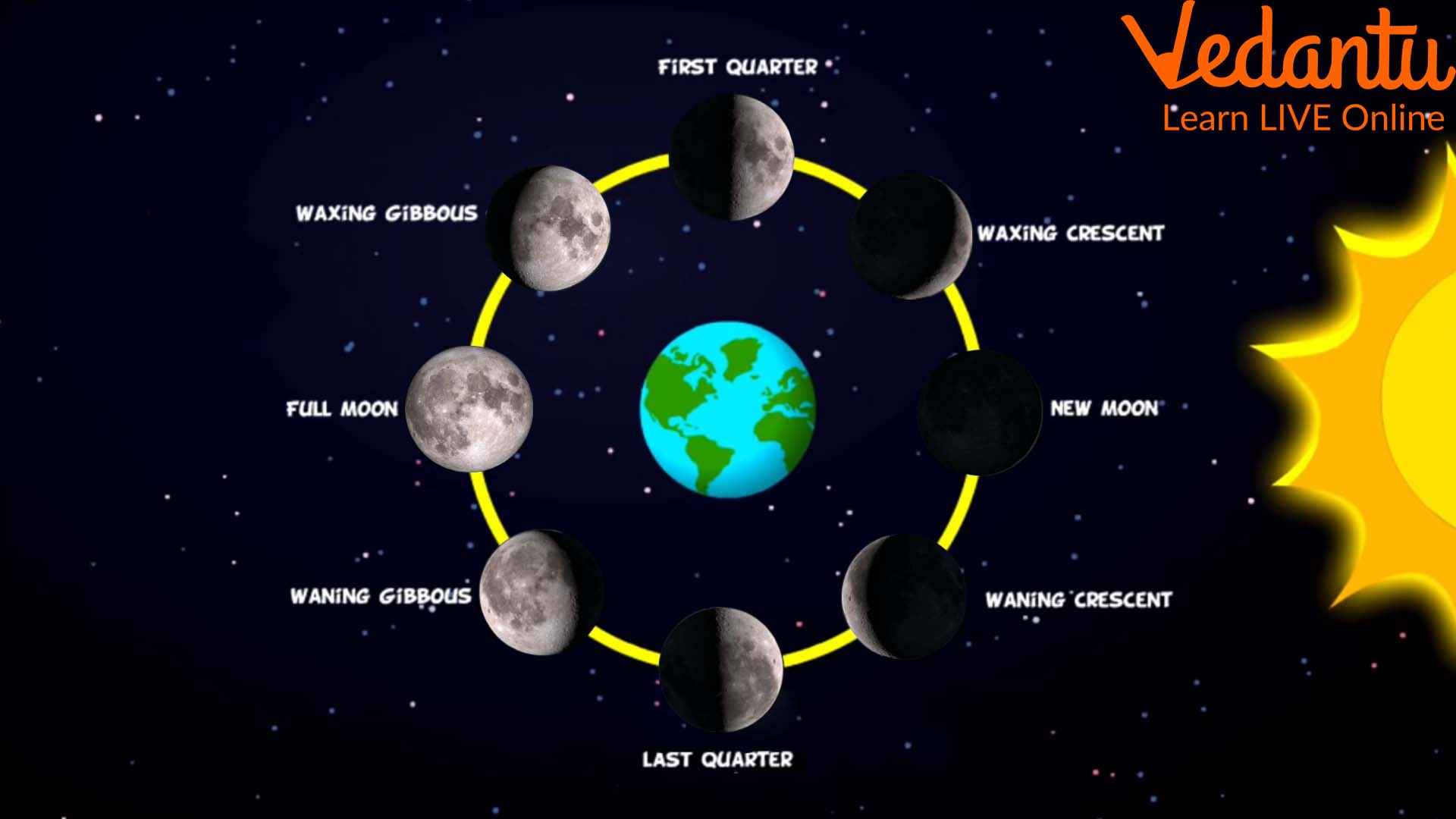Different Types of Moon Shapes
The Moon has been a constant source of inspiration for poets. Its majestic appearance on a dark night makes us feel amazed and surprised. We all can witness how the shapes of the Moon change over the course of a month. How does this happen? What is the scientific reason behind these phases of the Moon?
Our natural satellite revolves around the Earth and completes a revolutionary cycle in 27 days 7 hours and 43 minutes. A lunar month, on the other hand, is the time span that the Moon takes to complete all its phases. Its duration is 29 days, 12 hours, 4 minutes, and 2.8 seconds. Let us find out how these phases appear during a lunar month.
Why Does the Moon Shine at Night?
The Moon does not have its own light. The light comes from the Sun and bounces from its surface to make it glow at night. It is just a rocky natural satellite with no light source of its own. It means the shape of the Moon is actually the part of the glowing Moon we can see.
It does not actually change shape. The portion reflecting the Sun's rays glows and gives it a proper shape. So, what makes the stages of the Moon? Why is its surface not lightened by the Sun? How do these shapes occur? Let us find out.
What are the Phases of the Moon?
Our Moon is a spherical natural satellite hovering in space around our Earth. It is bound by the gravitational force of attraction of the Earth. The age of our Moon is 4.53 billion years, almost similar to that of the Earth.
A phase of the Moon is a lunar stage that appears every month where a particular part of the Moon’s surface is lit by the sunrays. The area and angles made by the dark and lit areas define a phase of the Moon. The Moon shapes have different names based on their features and characteristics.
An invisible Moon is called a new Moon. It then forms a crescent shape as the light falls on it. The shape then grows slowly every day and forms the half Moon. It then takes time to form the full Moon. In this phase, the Moon entirely glows by reflecting the sun's rays.
How Does a Phase of the Moon Form?
If you observe the phases of the Moon diagram, you will find that the line separating the shadow and lit area has a particular curvature. It explains that the Moon is also spherical like the Earth. It means that the Moon is actually moving around the Earth and its position shows where the Sun actually is. The lit portion is the one that faces the Sun and the dark one is the opposite of the Sun.

Phases of the Moon
Different Phases of the Moon
Here is a list of 8 shapes described by the phases of the Moon tracker.
1. New Moon
The new Moon is a phase where the sunrays are totally blocked by the Earth. It is considered the first phase of the lunar cycle.
2. Waxing Crescent
The next phase is the waxing crescent. A slit of a lit area can be seen on one side of the Moon. Here, the Earth’s shadow is slowly moving to the opposite of the Moon’s glowing area’s growth. It occurs a few days after the new Moon.
3. Waxing Quarter
According to the Moon tracker, this phase is the first quarter where half of the Moon’s visible surface shines by reflecting the sunrays falling on it.
4. Waning Gibbous
This is the fourth phase called the waxing gibbous phase. In this phase, nearly 3/4th of the Moon’s surface glows. This phase depicts the movement of the Moon towards the full Moon phase.
5. Full Moon
This is the middle phase of a lunar month. It takes 14.81 days to complete a cycle between a new Moon and a full Moon. During this phase, the Moon faces are entirely lit. It means that the Moon is reflecting sunrays showing a circular glowing surface.
6. Waning Gibbous
Another waning gibbous phase appears as the lit surface reduces from the full to the 3/4th phase.
7. Waning Quarter
As the lit surface reduces in size, only a quarter portion of it is visible to us. It is called waning gibbous.
8. Waning Crescent
In this phase, a crescent shape of the shining surface is witnessed on the Moon.
Trivia of the Moon Phases
If you think that the shadowed part on the Moon’s surface is growing, then it will be wrong. Actually, the Moon is always half glowing and half dark. It is a spherical object and one side of it always faces the Sun.
Astronomical science suggests that a spherical body will be half glowing and half dark when it is in front of a single source of light. It also happens on the Earth and we witness the days and night. Due to the movement of the Moon around the Earth, we can only see the partial, full, or dark surface of the Moon on different days of the lunar phase.
How Lunar Phases Affect Us?
The Earth’s magnetic field changes with the position of the Moon to some extent. Moreover, the intensity of the tides also depends on the lunar positions. Hence, the lunar phases enable us to determine such changes and track them down. Moonlight is the only source of light at night. It decreases and increases considering the phases.
We have now studied the different phases of the Moon. We can now track them and understand what is actually happening up there.







